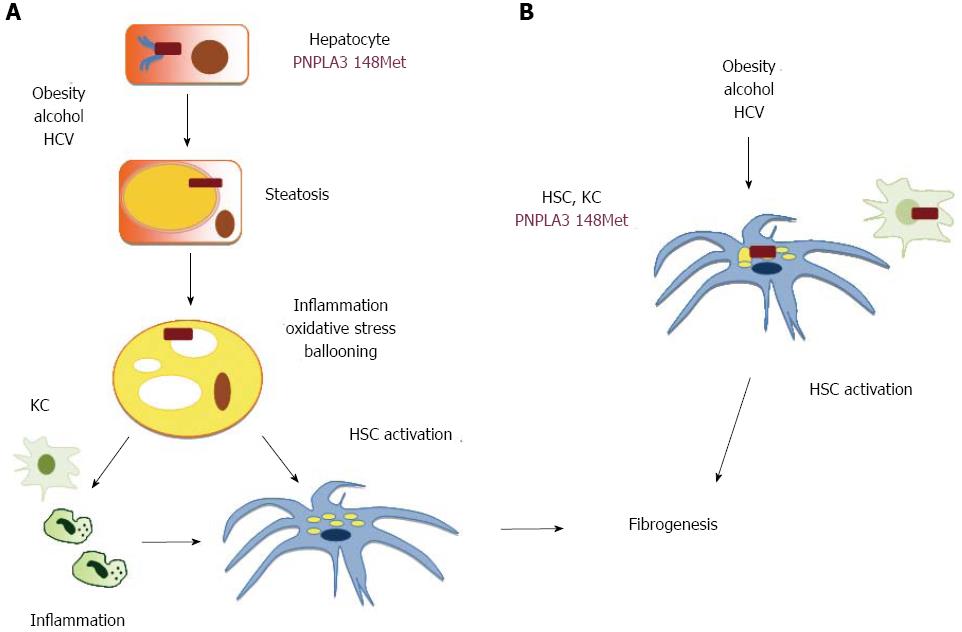Copyright
©2013 Baishideng Publishing Group Co.
World J Gastroenterol. Nov 7, 2013; 19(41): 6969-6978
Published online Nov 7, 2013. doi: 10.3748/wjg.v19.i41.6969
Published online Nov 7, 2013. doi: 10.3748/wjg.v19.i41.6969
Figure 1 Hypothetical mechanism of hepatic fat accumulation associated with the 148 Isoleucine to Methionine protein variant patatin-like phospholipase domain-containing 3 polymorphism.
ER: Endoplasmic reticulum; LPA: Lyso-phosphatidic acid; PA: Phosphatidic acid; Tg: Triglycerides; ?: To be confirmed; PNPLA3: Patatin-like phospholipase domain-containing 3.
Figure 2 Hypothetical mechanisms linking the 148 Isoleucine to Methionine protein variant of patatin-like phospholipase domain-containing 3 polymorphism with hepatic fibrogenesis in the presence of triggering factors for steatosis (Obesity and insulin resistance, excessive alcohol intake and chronic hepatitis C virus infection).
A: Direct effect of mutant 148 Isoleucine to Methionine protein variant patatin-like phospholipase domain-containing 3 (148M PNPLA3) on inflammation, oxidative stress, and cellular damage (ballooning) in hepatocytes with secondary activation of non-parenchymal cells, including Kupffer cells (KC) and hepatic stellate cells (HSC). Hepatocytes are shown in brown, KC in light green, neutrophils in dark green, HSC in blue. Nuclei are shown in darker shades of the cell color, whereas lipid droplets and steatosis in yellow, and ballooning (endoplasmic reticulum swelling) in white; B: Direct effect of the mutant 148M PNPLA3 on the activation of non-parenchymal cells. Mutant PNPLA3 (148Met) is shown as a red box.
- Citation: Dongiovanni P, Donati B, Fares R, Lombardi R, Mancina RM, Romeo S, Valenti L. PNPLA3 I148M polymorphism and progressive liver disease. World J Gastroenterol 2013; 19(41): 6969-6978
- URL: https://www.wjgnet.com/1007-9327/full/v19/i41/6969.htm
- DOI: https://dx.doi.org/10.3748/wjg.v19.i41.6969










